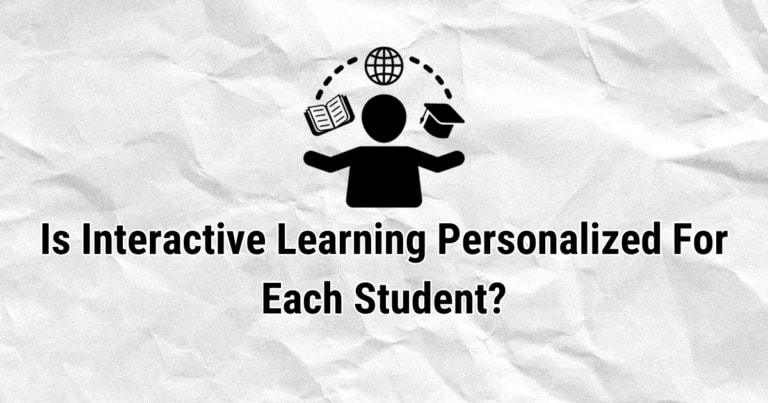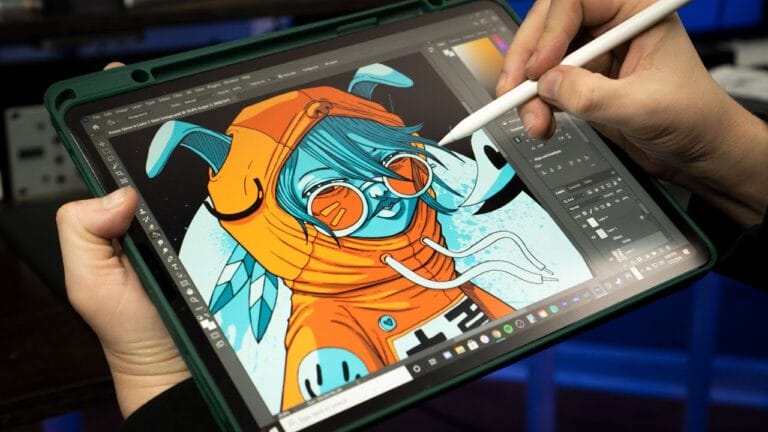
Do you ever wonder what challenges schools face when they try to make learning interactive and engaging? Well, look no further! In this article, we’re going to explore the hurdles of implementing interactive learning and why it’s important for educators to overcome them. So, buckle up and get ready to dive into the fascinating world of interactive education!
Picture this: you’re sitting in a classroom, and instead of staring at a blackboard, you’re using tablets, virtual reality headsets, and interactive games to learn. Sounds amazing, right? But here’s the thing: implementing interactive learning comes with its fair share of challenges.
From technological constraints to teacher training and integration into the curriculum, there’s a lot to consider. But fear not! We’ll guide you through these obstacles and shed light on how to make interactive learning a seamless and effective experience for all. So, let’s get started on this exciting journey together!

The Challenges of Implementing Interactive Learning
Interactive learning has gained popularity in recent years for its ability to engage students and enhance their learning experiences. However, the implementation of interactive learning comes with its own set of challenges. In this article, we will explore the various challenges that educators and institutions face when integrating interactive learning into their curriculum. From technological limitations to resistance from traditional teaching methods, we will shed light on the hurdles that need to be overcome to successfully implement interactive learning.
1. Resistance from Educators
One of the greatest challenges in implementing interactive learning is the resistance from educators who are accustomed to traditional teaching methods. Many educators have been teaching the same way for years and may be hesitant to adopt new approaches. They may feel overwhelmed by new technologies or lack the necessary training to effectively use interactive learning tools. To address this challenge, it is crucial to provide professional development opportunities and training to educators, helping them understand the benefits of interactive learning and how it can enhance student engagement and achievement.
Educators also need support and encouragement from school administrators and policymakers to embrace interactive learning and integrate it into their teaching practice. By fostering a culture of innovation and providing resources for professional development, the resistance from educators can be minimized, and the implementation of interactive learning can be more successful.
Additionally, it is important to address the concerns and misconceptions that educators may have about interactive learning, such as the fear of losing control in the classroom or the belief that it replaces human interaction. By providing evidence-based research and showcasing successful case studies, educators can be convinced of the value and efficacy of interactive learning.
2. Technological Limitations
Another significant challenge in implementing interactive learning is the technological limitations that may exist in educational settings. Not all schools or institutions have access to the necessary technology infrastructure, such as reliable internet connections or sufficient devices for every student. This digital divide can create disparities and hinder the implementation of interactive learning.
Furthermore, even in schools with adequate technological resources, there may be technical issues or compatibility problems with the interactive learning tools being used. This can lead to disruptions in the learning process and frustration among both educators and students.
To address these challenges, it is essential to prioritize and invest in the necessary technology infrastructure for interactive learning. This includes providing reliable internet access, ensuring the availability of devices or laptops, and regularly maintaining and updating the technology to minimize technical disruptions. Collaboration with technology experts and seeking grants or funding opportunities can also help schools overcome these technological limitations.
3. Student Engagement and Motivation
While interactive learning is designed to enhance student engagement and motivation, it can also present challenges in these areas. Students who have been conditioned to passive learning may initially struggle to actively participate and engage with the interactive learning activities. Some students may find it difficult to navigate through the digital platforms or may become distracted by other features or applications.
To overcome these challenges, it is essential to provide students with clear instructions and guidance on how to use the interactive learning tools effectively. Educators should also incorporate a variety of interactive activities that cater to different learning styles and interests, ensuring that students are motivated and engaged throughout the learning process.
Additionally, incorporating gamification elements into interactive learning can enhance student motivation. By introducing rewards, challenges, and competition, educators can create a more engaging and interactive environment that stimulates student interest and participation.
4. Assessment and Evaluation
An integral part of any educational approach is assessment and evaluation. However, implementing interactive learning can present challenges in this area. Traditional methods of assessment, such as written exams or quizzes, may not adequately measure the learning outcomes and skills acquired through interactive learning activities.
One way to address this challenge is to incorporate alternative forms of assessment that align with the interactive learning approach. This can include project-based assessments, presentations, or portfolios that showcase students’ progress and achievements. By shifting the assessment methods to align with the goals of interactive learning, educators can accurately evaluate the effectiveness of this approach.
Furthermore, leveraging technology to facilitate assessment and evaluation can provide educators with real-time feedback and insights into students’ learning progress. Interactive learning platforms often offer analytics and data tracking, allowing educators to monitor individual student performance and identify areas for improvement.
Best Practices for Implementing Interactive Learning
Now that we have explored the challenges of implementing interactive learning, let us delve into some best practices that can help overcome these hurdles and ensure a successful integration of interactive learning in the classroom.
1. Provide Professional Development Opportunities
Investing in professional development opportunities for educators is crucial to help them embrace and effectively implement interactive learning. This can include workshops, training sessions, and ongoing support from educational technology specialists. By equipping educators with the necessary skills and knowledge, they will be better prepared to navigate the challenges and leverage the full potential of interactive learning.
2. Prioritize Technology Infrastructure
Ensuring schools have the necessary technology infrastructure is vital for the successful implementation of interactive learning. Schools should allocate resources to provide reliable internet access, sufficient devices, and ongoing technical support. This will help overcome technological limitations and ensure a seamless learning experience for both educators and students.
3. Foster Collaboration and Sharing
Creating a culture of collaboration and sharing among educators can be beneficial in implementing interactive learning. Educators can share successes, challenges, and best practices, allowing for continuous improvement and learning from one another. This can be facilitated through professional learning communities, online forums, or mentorship programs.
Key Takeaways: Challenges of Implementing Interactive Learning
- 1. Technical difficulties can arise, such as compatibility issues and connectivity problems.
- 2. It can be challenging to keep students engaged and motivated in an online learning environment.
- 3. Creating interactive content requires time, resources, and expertise.
- 4. Feedback and assessment methods may need to be adapted to suit interactive learning approaches.
- 5. Teacher training and support are crucial for successful implementation of interactive learning.
Frequently Asked Questions
What exactly is interactive learning?
Interactive learning is an educational approach that involves active participation and engagement from students. It goes beyond traditional teaching methods by incorporating technology, hands-on activities, discussions, and collaborative projects. The goal is to create an interactive learning environment that encourages students to explore, ask questions, and apply their knowledge in practical ways.
What are some of the challenges of implementing interactive learning?
One challenge of implementing interactive learning is the need for adequate resources and technology. Not all schools or classrooms have access to the necessary tools, such as computers, internet connection, or interactive whiteboards. Additionally, training teachers on how to effectively use these resources can be a hurdle.
Another challenge is the shift in the traditional role of teachers. Interactive learning requires educators to take on the role of facilitators and guides, rather than just delivering lectures. This change in approach may require additional professional development and support for teachers to successfully implement interactive learning strategies.
How can lack of student motivation be a challenge in interactive learning?
Lack of student motivation can be a significant challenge in implementing interactive learning. When students are not fully engaged or motivated, it can hinder their ability to participate actively and benefit from the interactive activities. This lack of motivation may stem from various factors, including disinterest in the subject, a lack of confidence, or previous negative learning experiences.
To address this challenge, it is crucial to create engaging and meaningful interactive learning experiences that cater to the diverse interests and learning styles of students. Incorporating gamification, real-world applications, and personalized learning approaches can help increase student motivation and participation.
What role does assessment play in interactive learning?
Assessment in interactive learning goes beyond traditional tests or exams. It focuses on assessing students’ understanding, skills, and abilities through a variety of methods, such as project-based assessments, group discussions, presentations, and hands-on activities. Assessment in interactive learning aims to evaluate not only knowledge but also critical thinking, problem-solving, and collaboration skills.
One of the challenges of assessment in interactive learning is the need for more innovative and authentic assessment methods. Traditional assessments may not accurately capture the full range of skills and knowledge that interactive learning promotes. Educators must find ways to effectively assess students’ learning outcomes in interactive and dynamic learning environments.
How can the digital divide be a challenge in implementing interactive learning?
The digital divide refers to the gap in access to technology and the internet between different groups of people. It can be a significant challenge in implementing interactive learning because not all students have equal access to devices and the internet at home or in school. This disparity can create unfair advantages or disadvantages for students depending on their access to technology.
To address the digital divide, schools and educational institutions can provide resources and support to ensure that all students have access to the necessary technology, whether it’s through providing devices or facilitating internet access. Collaborating with community organizations, leveraging government initiatives, and seeking external funding are some strategies that can help bridge the digital divide and ensure equitable access to interactive learning opportunities.
Summary
Implementing interactive learning can be challenging, but it has many benefits for students. One key challenge is the need for sufficient technology and internet access. Schools must also provide teacher training to ensure effective implementation. Another challenge is adapting curriculum and assessment methods to align with interactive learning. However, despite these challenges, interactive learning can engage students, promote critical thinking, and improve academic performance. It is a valuable approach to education that should be embraced with proper planning and resources.






